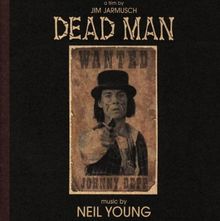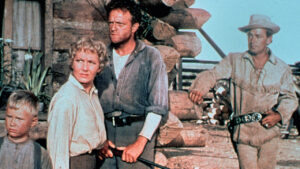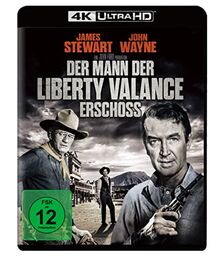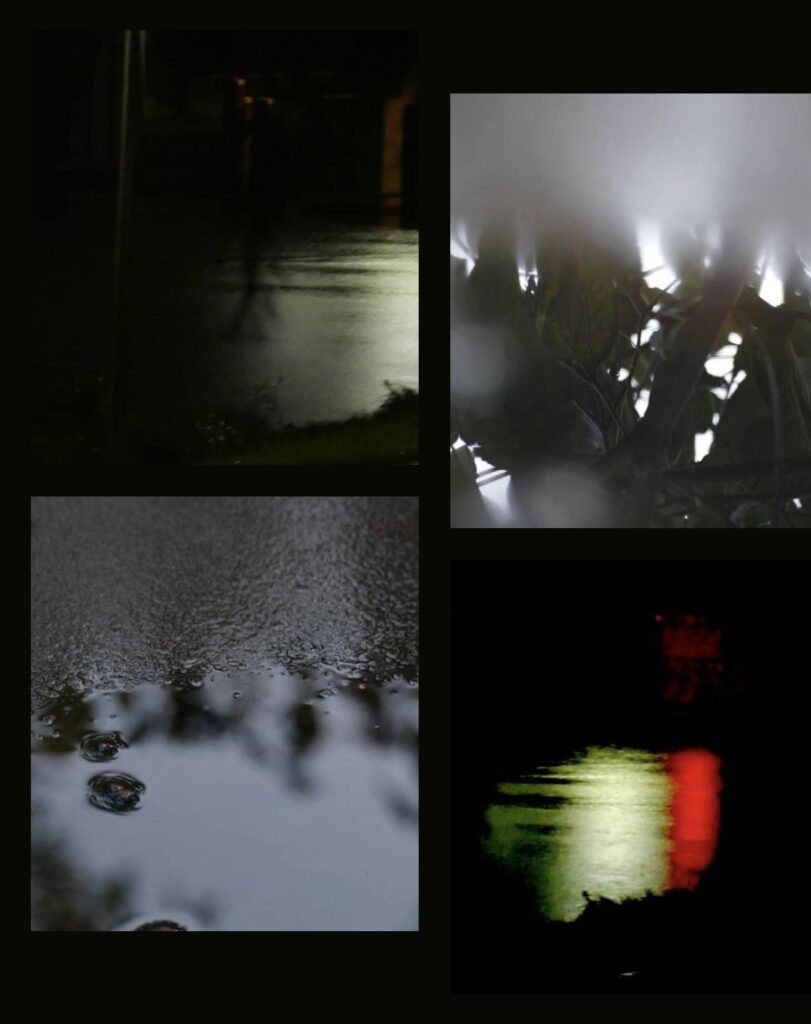Uncategorized
“Dead Man“ von Jim Jarmusch (no. 4)
Es gibt Filme, und das mag eine Binse sein, für die man in der passenden Stimmung sein sollte. Das gilt ganz sicher für „Dead Man“ von Jim Jarmusch, den viertbesten Western aller Zeiten, in meiner Welt. Meine Mutter zitierte gerne ein-, zweimal Michel de Montaigne, wenn sie sagte, „das Leben zu leben, heisse, das Sterben zu lernen“ . Bei diesem Film, dachte ich, in seinem langen Finale, an diese französische Spruchweisheit, aber mich richtig zu packen, gelang „Dead Man“ erst beim zweiten Sehen in einem Progammkino im Londoner Westend.
Da war ich in der „richtigen Stimmung“, sanft melancholisch, endlos hungrig auf meine Lieblingsstadt (ich war an dem Tag stundenlang an den Docklands entlanggewandert), und mit weit geöffnet Ohren für die Magie von Neil Youngs Gitarrenimprovisationen. Tatsächlich funktioniert dieser Soundtrack allein im Verbund mit den bewegten Bildern, anders als Ry Cooders „Paris, Texas“ (ein Album, das ECM damals nur zu gerne rausgebracht hätte). Nicht alle Jim Jarmusch-Filme erhalten ihre Strahlkraft über die Jahre – dieser auf jeden Fall!

Die auffälligste Rolle, die in schönem Kontrast zu dem von Johnny Depp gespielten Blake und seinem passivem Wesen steht, ist Nobody (ein etwas anderer Nobody als der von Terence Hill gespielte, in dem wunderbaren Spätwestern „Mein Name ist Nobody“), ein amerikanischer Indianer (ja, ich darf das so sagen), mit hoher Spiritualität, geringem Selbstwertgefühl und pausenlosem Geplapper. Nobody behauptet, als Kind nach England entführt und als Wilder vorgeführt worden zu sein, und wandert nun, losgelöst von seinem Stamm, durch die Wälder und versucht, spirituelle Führung durch Peyote und die Poesie von William Blake zu finden.
Mit Neil Youngs traumverlorener Gitarrenmusik entwickelt sich „Dead Man“ zu einem seltsam modernen Buddy-Movie, in dem Außenseiter in ihrer Isolation vereint sind, und hat am Ende mehr mit „Midnight Cowboy“ als mit „The Man Who Shot Liberty Valance“ gemein. Eine filmische Meditation der Extraklasse, noch dazu eine schwarze Komödie, und existenzieller Stoff mir den wunderbaren Kamerafahrten von Robby Müller.Reel #2

ostinato passando, yearning
To operate a REEL: zoom in by clicking on the ‘AMSONANZA’ mark when the reel starts. The ‘AMSONANZA’ mark also appears at the end a bit larger. When you click on it, the reel will be repeated.
Chelsea Hotel
The Hotel Chelsea (also known as the Chelsea Hotel and the Chelsea) is a hotel at 222 West 23rd Street in the Chelsea neighborhood of Manhattan in New York City. Built between 1883 and 1884, the hotel was designed by Philip Hubert in a style described variously as Queen Anne Revival and Victorian Gothic. The 12-story Chelsea, originally a housing cooperative, has been the home of numerous writers, musicians, artists, and entertainers, some of whom still lived there in the 21st century. As of 2022, most of the Chelsea is a luxury hotel. The building is a New York City designated landmark and on the National Register of Historic Places.
The front facade of the Hotel Chelsea is 11 stories high, while the rear of the hotel rises 12 stories. The facade is divided vertically into five sections and is made of brick, with some flower-ornamented iron balconies; the hotel is capped by a high mansard roof. The Hotel Chelsea has thick load-bearing walls made of masonry, as well as wrought iron floor beams and large, column-free spaces. When the hotel opened, the ground floor was divided into an entrance hall, four storefronts, and a restaurant; this has been rearranged over the years, with a bar and the El Quijote restaurant occupying part of the ground floor. The Chelsea was among the first buildings in the city with duplex and penthouse apartments, and there is also a rooftop terrace. The hotel originally had no more than 100 apartments; it was subdivided into 400 units during the 20th century and has 155 units as of 2022.
The idea for the Chelsea arose after Hubert & Pirsson had developed several housing cooperatives in New York City. Developed by the Chelsea Association, the structure quickly attracted authors and artists after opening. Several factors, including financial hardships and tenant relocations, prompted the Chelsea’s conversion into an apartment hotel in 1905. Knott Hotels took over the hotel in 1921 and managed it until about 1942, when David Bard bought it out of bankruptcy. Julius Krauss and Joseph Gross joined Bard as owners in 1947. After David Bard died in 1964, his son Stanley operated it for 43 years, forming close relationships with many tenants. The hotel underwent numerous minor changes in the late 20th century after falling into a state of disrepair. The Krauss and Gross families took over the hotel in 2007 and were involved in numerous tenant disputes before the Chelsea closed for a major renovation in 2011. The hotel changed ownership twice in the 2010s before BD Hotels took over in 2016, and the Chelsea reopened in 2022.
Over the years, the Chelsea has housed many notables such as Arthur Miller, Bob Dylan, Arthur C. Clarke, Patti Smith, Robert Mapplethorpe, and Virgil Thomson. The Chelsea received much commentary for the creative culture that Bard helped create within the hotel. Critics also appraised the hotel’s interior—which was reputed for its uncleanliness in the mid- and late 20th century—and the quality of the hotel rooms themselves. The Chelsea has been the setting or inspiration for many works of popular media, and it has been used as an event venue and filming location.
Over the years, the Chelsea has become particularly well-known for its residents, who have come from all social classes. The New York Times described the hotel in 2001 as a „roof for creative heads“, given the large number of such personalities who have stayed at the Chelsea; the previous year, the same newspaper had characterized the list of tenants as „living history“. The journalist Pete Hamill characterized the hotel’s clientele as „radicals in the 1930s, British sailors in the 40s, Beats in the 50s, hippies in the 60s, decadent poseurs in the 70s“. Although early tenants were wealthy, the Chelsea attracted less well-off tenants by the mid-20th century, and many writers, musicians, and artists lived at the Hotel Chelsea when they were short on money. Accordingly, the Chelsea’s guest list had almost zero overlap with that of the more fashionable Plaza Hotel crosstown. New York magazine wrote that „people who lived in the hotel slept together as often as they celebrated holidays together“, particularly under Stanley Bard’s tenure. Despite the high number of notable people associated with the Chelsea, its residents typically desired privacy and frowned upon those who used their relationships with their neighbors to further their own careers.
The Hotel Chelsea has housed numerous literary figures, some of whom wrote their books there. Arthur C. Clarke wrote 2001: A Space Odyssey while staying at the Chelsea, calling the hotel his „spiritual home“ despite its condition. Thomas Wolfe lived in the hotel before his death in 1938, writing several books such as You Can’t Go Home Again; he often walked around the halls to gain inspiration for his writing. William S. Burroughs also lived at the Chelsea. While living at the Chelsea, Edgar Lee Masters wrote 18 poetry books, often wandering the hotel for hours.
Welsh poet Dylan Thomas (who lived with his wife Caitlin Thomas) was staying in room 205 when he became ill and died in 1953, while American poet Delmore Schwartz spent the last few years of his life in seclusion at the Chelsea before he died in 1966. Irish poet Brendan Behan, a severe alcoholic who had been ejected from the Algonquin Hotel, lived at the hotel for several months before his death in 1964. Many poets of the Beat poetry movement also lived at the Chelsea before the Beat Hotel in Paris became popular.
Other authors, writers, and journalists who stayed or lived at the hotel have included:
Henry Abbey, poet – Nelson Algren, writer – Léonie Adams, poet; lived with husband William Troy – Sherwood Anderson, writer – Ben Lucien Burman, writer – Henri Chopin, poet and musician – Ira Cohen, poet and filmmaker – Gregory Corso, poet – Hart Crane, poet – Quentin Crisp, writer and actor – Jane Cunningham Croly, journalist – Katherine Dunn, novelist and journalist – Edward Eggleston, writer – James T. Farrell, novelist – Allen Ginsberg, poet – John Giorno, poet – Maurice Girodias, publisher – Pete Hamill, journalist – Bernard Heidsieck, poet – O. Henry, writer – Herbert Huncke, poet – Clifford Irving, novelist and reporter – Charles R. Jackson, author – Theodora Keogh, novelist – Jack Kerouac, writer – Suzanne La Follette, journalist – John La Touche, lyricist – Jakov Lind, novelist – Mary McCarthy, novelist and political activist – Arthur Miller, playwright – Jessica Mitford, author – Vladimir Nabokov, novelist – Eugene O’Neill, playwright – Joseph O’Neill, novelist – Claude Pélieu, poet and artist – Rene Ricard, poet – James Schuyler, poet – Sam Shepard, playwright and actor – Valerie Solanas, writer – Benjamin Stolberg, publicist and author – Richard Suskind, children’s writer – William Troy, critic; lived with wife Léonie Adams – Mark Twain, writer – Gore Vidal, writer – Arnold Weinstein, librettist – Tennessee Williams, playwright – Yevgeny Yevtushenko, poet.
The Chelsea was particularly popular among rock musicians and rock and roll musicians in the 1970s. These included Sid Vicious of the Sex Pistols, who allegedly stabbed his girlfriend Nancy Spungen to death at the hotel in 1978; after Vicious’s death, their room was split into two units to prevent the room from being turned into a shrine. Numerous rock bands frequented the Chelsea as well, including the Allman Brothers, the Band, Big Brother and the Holding Company, the Paul Butterfield Blues Band, the Byrds, Country Joe and the Fish, Jefferson Airplane, Lovin‘ Spoonful, Moby Grape, the Mothers of Invention, Quicksilver Messenger Service, Sly and the Family Stone, and the Stooges. The Kills wrote much of their album No Wow at the Chelsea prior to its release in 2005. The Grateful Dead once performed on the roof.
Reels
Reels are moving pictures of a special kind, mostly with a soundtrack: short sequences, Schlaglichter of about one minute with splinters of a diversity/heterogenity of reality moments arranged in infectious, alienating, surprising way, where pictures and music enter special mutually illuminating and enforcing interactions. They are created and designed by a combination of (planned) deliberate choices and chance, serve incitement and excitement, can evoke beholders‘ own cross-links. Brevity is the soul of wit, in der Kürze liegt die Würze.
To operate a REEL: zoom in by clicking on the ‘AMSONANZA’ mark when the reel starts. The ‘AMSONANZA’ mark also appears at the end a bit larger. When you click on it, the reel will be repeated.

I have some ‚in petto‘ to present here and will be happy about your responses and comments.
REEL #1 – Vostok

Live Drawing at ORGELPARK Amsterdam w/Vostok – Remote Islands – harpsichord: Guus Janssen, technics: Marielle Growen
To operate a REEL: zoom in by clicking on the ‘AMSONANZA’ mark when the reel starts. The ‘AMSONANZA’ mark also appears at the end a bit larger. When you click on it, the reel will be repeated.
Jake Hinkson’s „Sex, Death, and Jean Arthur“, or: (Shane (1953), no. 9 of Michael‘s ten favourite Western movies that can still put a spell on you today)
Stevens wanted to demonstrate to audiences „the horrors of violence“. To emphasize the terrible power of gunshots, he created a cannon-like sound effect by firing a large-caliber weapon into a garbage can. In addition, he had the two principal shooting victims (…) rigged with hidden wires that jerked them violently backward when shot. These innovations, according to film historian Jay Hyams, marked the beginning of graphic violence in Western movies. He quotes Sam Peckinpah: „When Jack Palance shot N.N. in Shane, things started to change.“ (Wikipedia)
Es war natürlich nur ein kleiner cineastischer Traum, das amerikanische Bewusstsein zu schärfen für „the horrors of violence“. Bei seinem Auftritt in Glendale im politisch umkämpften Bundesstaat Arizona nannte der widerliche und meines Erachtens real „geistesgestörte“ Donald Trump Cheney eine „radikale Kriegstreiberin“ und schlug dann vor, sie in eine Situation zu bringen, in der sie „mit einem Gewehr dasteht, während neun Gewehrläufe auf sie feuern“. Dann fuhr er fort: „Lasst uns sehen, wie sie das findet, wenn die Waffen ihr ins Gesicht gerichtet sind.“ Politiker wie sie seien Kriegstreiber, wenn sie in ihren netten Gebäuden in Washington säßen und sich entschieden, 10.000 Soldaten „ins Maul des Gegners zu schicken“, sagte Trump weiter. Ich will in der nächsten Woche nirgendwo den Satz lesen: „good night, America“. Aus der Nacht würde ein Alptraum. (m.e.)

Als ich gestern, nach Ewigkeiten, wieder „Shane“ erlebte, einen Film, der in Deutschland mit dem Titel „Mein grosser Freund Shane“ lief, war ich fasziniert von der Figur, die Jean Arthur spielte. Ich musste hinterher googeln, um zu erfahren, von wem Marian Starrett, die Farmersfrau, gespielt wird. Von wegen nur das Muttchen in der Küche (auch wenn sie offenbar einen wunderbaren Kuchen aus dem Ofen zaubert, der bestimmt nahe rankommt an Joni Mitchells Rhabarberkuchen für Graham Nash).Selbst ausgewählte Filmfotos lassen ihre erotische Ausstrahlung in diesem Film kaum erahnen. Hier geht es in keiner Sekunde um das alten Spiel mit der „femme fatale“. Gerade die Reibung zwischen ihrer sehr traditionell angelegten Rolle, und den zwischen Zeilen, Blicken und Momenten durchschimmernde „Gefühlswelt“ produziert eine feine Spannung. Trotz einer etwas langen Saloonschlägerei ist „Shane“ ein besonders feinsinniger Wildwestfilm. Ein Höhepunkt ist der abendliche Tanz von Marian mit Shane, eine Paradebeispiel für die Sublimierung sexueller Energie (nur an der Oberfläche hat dieser Tanz (ein „Ländler“? ein square dance?) den skurrilen Charme eines Tanzabends aus der „Raumpatrouille Orion“, „it‘s a brooding affair“).
Alles andere als ein „film noir“, liegt ein Hauptaugenmerk dieses Westerns auf der Beziehung ihres Jungen zu der Figur des „lonesome drifters“ Shane. Hier nun den bösen alten Onkel Ödipus ins Spiel zu bringen, wäre eine Sackgasse. Eine naheliegende, aber falsche Fährte. Es geht vielmehr, in einem Film, der überraschend viele Ebenen hat (trotz meiner Wikipedia-Lektüre zweifel ich immer noch daran, dass die Berge im Hintergrund real sind), um Freundschaft, Bewunderung, die kleinen Einrisse von Projektionen, wenn unsere „Wunschbilder“ ins Wanken geraten, oder die Sehnsucht nach einer hübschen Portion Ewigkeit sich letztlich als Perlenschnur unvergesslicher Momente erweist. Das Ende einer Kindheit. By the way: herrlich altes Color (mit teilweise „märchenhaften“ Farbwerten) – und „Shane“ kam im damals neuen Breitwandformat in die Kinos.
(Das Interessanteste, mit einer durchaus verstörenden Note, am Schluss. Ich fand den folgenden kleinen Essay von Jake Hinkson auf seinem Filmblog, einen Text aus dem Jahre 2012. und ich füge ausdrücklich hinzu, dass ich einige Dinge anders sehe als Jake. Mich interessieren hier einmal mehr die Mechanismen der Projektion. Insofern sehr lesenswert.)

Jean Arthur has been on my mind today. I’m not sure why, except that she is one of those movie people (Lizabeth Scott, Robert Mitchum, Gary Cooper, Ingrid Bergman) who seems to have staked a claim to a certain portion of my mind. So, in a way, I’m always thinking about Jean Arthur.
She was a huge star in her day, but over the years the luster of her fame has dimmed considerably. I guess that’s the way of things. It’s only our own solipsism and narrow focus that allows us to talk about the „immortality“ of movie stars. That kind of talk in nice for Oscar speeches and TCM intros, but the truth is that Jean Arthur was world famous at one point and since her death her fame has shrunk and shrunk with each passing year. She will be all but forgotten one day. Movies are still a young art form. In just another hundred years will anyone know who Jean Arthur is? Or will she exist only as a shadow on a data file in a computer somewhere, accessed once every few years by some bleary-eyed film student writing a master’s thesis on Subtextual Transfiguration in the Works of Frank Capra–or whatever the hell they’ll be writing about in the year 2112? What about 2212? Keep adding on increments of 100 years. Immortality becomes less achievable the more you think about it.
So this is a lament then. I hadn’t planned it that way, I assure you. Someone mentioned Iowa today and it made me think of my favorite Jean Arthur moment, the scene in FOREIGN AFFAIR when she strikes up the Iowa state song in a dirty little Berlin nightclub. The thought, as it always does, made me happy.
Yet here I am talking about–well, if not her passing, then about her absence, about the fact that she is gone and has been gone a long time. Yet I know her, or I know that flickering shadow. I saw that movie for the first time in a theater, saw it for the first time in the dark with her face high and wide and silver on a wall.
I’ve long thought that cinema is an intrinsically erotic art form. We are allowed to stare at people without them staring back, without them telling us to stop. This is one reason why movie stars tend to be beautiful. But this is also why movie stars tend to be a little odd. Millions of gorgeous people are turned away from Hollywood every day. Beauty is not enough. There has to be something worth looking at besides tan skin and muscles.
Jean was beautiful and odd. She had a tomboy quality. Pretty and scrappy, capable but halting, she was a movie star because she was just so damn interesting. Looking at her is indeed a happily erotic occupation. Classic movie geeks often talk about being „in love“ with certain actors and actresses. This is more than a crush, more than simple lust, more than the usual projection of erotic fixation one has for a contemporary celebrity. It’s closer to necrophilia.
That’s a gruesome way to put it, isn’t it? But if being an „old movie buff“ is largely the matter of being obsessed with women many years dead, then this obsession touches that bizarre intersection of sex and death, eros and thanos, which is not the creation of cinema but is its essential creator. Life, after all, is largely a matter of sex and death. Movie stars are no more immune to these forces than the rest of us. We may regard them as sexual objects, but they are people and people die. When they die, then, what becomes of the sexual object left flickering on the wall? It becomes an object, oddly, of both sex and death.
All this from the Iowa corn song.
“True Grit“ (the Coen Bros. version) – no. 7 & „Der Mann, der Liberty Valance erschoss“ – no. 10

(Brandneuer Remix, mit einem running gag, ein bisschen Kraftwerk, und Drama ohne Ende)
Ich mag beide Versionen von „True Grit“, und habe vor Jahren sogar mit Wehmut (Achtung, dieses Wort taucht gleich noch einmal auf) den berühmten kleinen Roman gelesen, der die Vorlage bildete. Manchmal mochte ich sogar John Wayne, obwohl mir Charaktere wie die oft von James Stewart gespielten, viel näher waren. So eine bestimmte spröde „Männlichkeit“ verfehlte jede Wirkung auf mich, deswegen hielt ich z.B. Zorbas von Anfang an für einen Spinner. Genauso wie viele rosa gekleideten Baghwans. Einmal stellte ich in Dortmund mit 18 Lenzen „Jünger“ der Transzendentalen Meditation vor einem grossen Publikum, und mit Herzklopfen, zur Rede, weil ich das Bezahlen für sog. heilige, auf einen persönlich zugeschnittene, Mantras für reine Geldmacherei hielt. Später begegneten mir solche Gurus auch unter anderem einmal als Leiter einer Suchtklinik nahe Aschaffenburg.
Ich sagte formlos ab und bin heute noch Ralf S. dankbar, dass er mich nach Furth i. W. holte, dort richtete ich meine erste Höhle ein, am Ausläufer des Hohen Bogens, ich hatte die schönste Musik der Welt darin, und einen alten Fernseher, in dem ich auch meiner alten Liebe zu Wildwestfilmen nachging. Die lassen sich nicht auf ein paar Klischees runterbrechen, und können – in ihren gelungendsten Ausprägungen – Stories voller Magie ausbreiten.
Gestern erst sah ich „Shane“ (vielleicht meine no. 9) wieder, mit Alan Ladd, ein Kindheitswesternhighlight, das heute noch bezaubern kann. Melancholische Einzelgänger wie Shane schätzte ich sehr, auch so wunderbar wehmütige Figuren mit Rückgrat wie James Stewart in „Der Mann der Liberty Valance erschoss“. Natürlich floss da etwas Selbstmitleid ein, und ich sah mich damals hier und da schon als „Loner am Ende der Welt“.
Aber ich hatte ein paar verdammt gute Freunde in Arnschwang und um Arnsxhwang herum (wir sehen uns in gut zwei Wochen wieder, tief in der Eifel!), Gudrun und Hansjörg sorgten als frisch gegründete Familie für die immer wieder mal erforderliche Erdung – und eine grüne Strähne in meinem Haar. Uwe und ich, die Gespräche nach unseren engen Tennismatches. Und die Woche in Berlin beim Kongress der Verhaltenstherapie – wir bespielten unser Glück und landeten in manchen Armen. Und sahen beim Berliner Filmfest einen Dirty Harry Film, und einen kleinem feinen Krimi von Christopher Petit.

Ein halbes Jahr später, an einem Winterabend, lief also „Der Mann, der Liberty Valance erschoss“ nahe der tschechischen Grenzem in meiner „Wildnis“, und die schönste Frau Regenburgs legte sich zu mir ins Bett. Da muss jetzt wieder an „Shane“ denken, und die gewaltige erotische Ausstrahlung von Jean Arthur. Ich wollte hier eigentlich viel mehr erzählen über Erlebnisse mit bestimmten Soundtracks von Western, die mich so oft in ihren Bann zogen, egal, ob alte Hollywoodschule oder gegen den Strich gebürstete Songs und Sounds. Statt dessen, die Schuld solcher Abschweifungen, geistern mir „meine Songs“ von 1982 durch den Kopf, „Come on, Eileen“, „Abracadabra“, und, rauf und runter, alles von „Remain In Light“. Und „Das Model“ (und das ganze Album) von Kraftwerk im Hinterland zu spielen, im Rausch der Sinne, zwischen grosser Liebe und Burnout, das hatte was.
Aber zurück zu „True Grit“: „True Grit is a harsher, more sombre film than the Wayne version, the tone chillingly wintry rather than gently autumnal, the music less jaunty, more religious and pastoral. It’s also funnier, yet never inviting the description „comic western“. The villains, when they eventually appear, are perhaps a little less colourful than those in the 1969 film, and Jeff Bridges’s diction lacks Wayne’s clarity, though in other ways he’s altogether more complex. It also has a brief, moving, beautifully staged epilogue set in 1903 that brings the picture to a satisfying conclusion.“ (Philip French, The Guardian)

